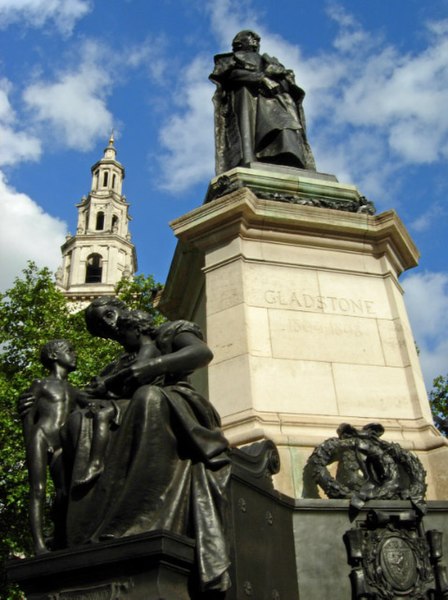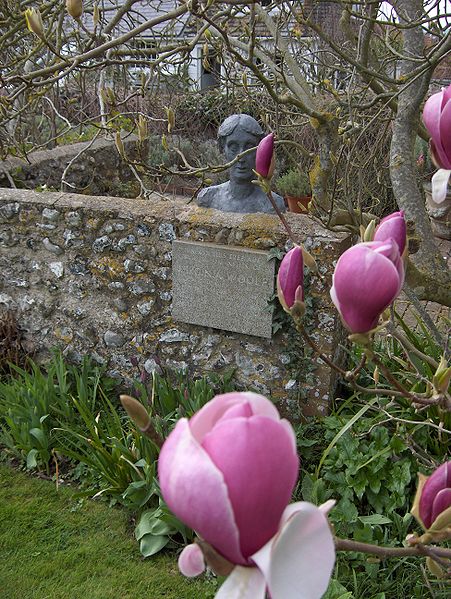 The conventional wisdom is that Mary Wollstonecraft was forgotten for most of the 200+ years since her death. This turns out to be as accurate as the assumption of each generation that it invented sex.
The conventional wisdom is that Mary Wollstonecraft was forgotten for most of the 200+ years since her death. This turns out to be as accurate as the assumption of each generation that it invented sex.Those first coming upon the subject would be forgiven for assuming that she was dropped as soon as the furore around Godwin's Memoirs made her persona non grata in polite society, and not picked up again until the second wave feminists' rediscovery of her in the 1970s. Those who take the time even to scratch the surface will come across Virginia Woolf's celebrated biographical essay, published in the Common Reader in 1932 ("one form of immortality is hers undoubtedly: she is alive and active, she argues and experiments, we hear her voice and trace her influence even now among the living"). And it doesn't take all that much to become aware (as I did last year) of the 1879 Letters to Imlay, with prefatory memoir by C. Kegan Paul, and the subsequent suffragette-led resurgence of Mary's work. But it is not always so easy to find a picture of when she was reprinted and read during most of the C19, or indeed the C20 up to c. 1970, excepting these spikes of interest.
Christine Wilkerson, whom I encountered on Twitter (@michnelago), tells me she worked on a paper entitled "Wollstonecraft's Philosophical Impacts on Nineteenth-Century American Women's Rights Advocates". Its abstract:
This article challenges the thesis that the publication of William Godwin's scandalous Memoirs of the Author of A Vindication of the Rights of Woman in 1798 minimized the philosophical impact of Mary Wollstonecraft's 1792 work the Rights of Woman in nineteenth-century American political thought. Instead, we demonstrate that leading nineteenth-century American women's rights advocates-Hannah Mather Crocker, Lucretia Mott, Sarah Grimké, Margaret Fuller, Elizabeth Cady Stanton, and Susan B. Anthony-understood themselves to be in a critical, philosophical dialogue with the text of the Rights of Woman, and in some cases, the Memoirs, and defined their own, distinctive philosophies of sex equality partly within this context.
 One of the purposes of this blog is to catalogue everyone who read Mary. Everyone? Let me define my terms: not the well-documented contemporaries and friends, but everyone who came across her after her death and before 1879, and everyone from that point on who acknowledged her life or writing as an influence in their own development. I'm looking for everyone who namechecked her as significant to them, and who has made some notable contribution to the world: a book, a law, a business, a school. The more unexpected, the better: we have seen what Amartya Sen drew from her, and in future posts will look at other thinkers, starting with politicians such as William Gladstone in the C19 and Ayaan Hirsi Ali in the C21. I also have up my sleeve an anarchist with a marvellously Baroque name, and an American man whose utopian feminism influenced Mary Shelley.
One of the purposes of this blog is to catalogue everyone who read Mary. Everyone? Let me define my terms: not the well-documented contemporaries and friends, but everyone who came across her after her death and before 1879, and everyone from that point on who acknowledged her life or writing as an influence in their own development. I'm looking for everyone who namechecked her as significant to them, and who has made some notable contribution to the world: a book, a law, a business, a school. The more unexpected, the better: we have seen what Amartya Sen drew from her, and in future posts will look at other thinkers, starting with politicians such as William Gladstone in the C19 and Ayaan Hirsi Ali in the C21. I also have up my sleeve an anarchist with a marvellously Baroque name, and an American man whose utopian feminism influenced Mary Shelley.
 Another purpose of this blog, I have decided on the hoof, is to document good and bad examples of public art, especially sculpture, with bonus points for representational statues, memorials to women, and public celebrations of feminists. This is intended to feed into the Mary on the Green project. Here, for example, are two statues of Gladstone, four time Liberal prime minister of Great Britain (and Ireland, but that's another story). He is standing in Manchester and sitting in London; in both he is on a massive pedestal, and the passer-by has no contact, and hence no motivation to take an interest in him. #fail
Another purpose of this blog, I have decided on the hoof, is to document good and bad examples of public art, especially sculpture, with bonus points for representational statues, memorials to women, and public celebrations of feminists. This is intended to feed into the Mary on the Green project. Here, for example, are two statues of Gladstone, four time Liberal prime minister of Great Britain (and Ireland, but that's another story). He is standing in Manchester and sitting in London; in both he is on a massive pedestal, and the passer-by has no contact, and hence no motivation to take an interest in him. #fail And here are two copies of the same bust of Virginia Woolf by Stephen Tomlin. The one on the left is on a wall in Lewes, Sussex: "Beneath this tree are buried the ashes..." The one on the right is in Tavistock Square, central London, on a white column that stands in for her body. (I have learned the technical term for this: a herm.) I find the sculpture itself willfully ugly, but at least the first has the benefit of its setting.
And here are two copies of the same bust of Virginia Woolf by Stephen Tomlin. The one on the left is on a wall in Lewes, Sussex: "Beneath this tree are buried the ashes..." The one on the right is in Tavistock Square, central London, on a white column that stands in for her body. (I have learned the technical term for this: a herm.) I find the sculpture itself willfully ugly, but at least the first has the benefit of its setting.Tomorrow: Written on the Body - a surprising image
All images from Wikimedia Commons.


Although you wrote this some time ago, I must write to object. You state here that I wrote that no self-respecting woman read Wollstonecraft's book. As the quotation to which this point shows, what I said is that her ATTACKERS said or implied that no self-respecting woman would read the book. Of course the book was republished and read.And in this context, no, "Self-respecting" does not mean middle class. Why needlessly attack someone for something she didn't say?
ReplyDelete--Virginia Sapiro